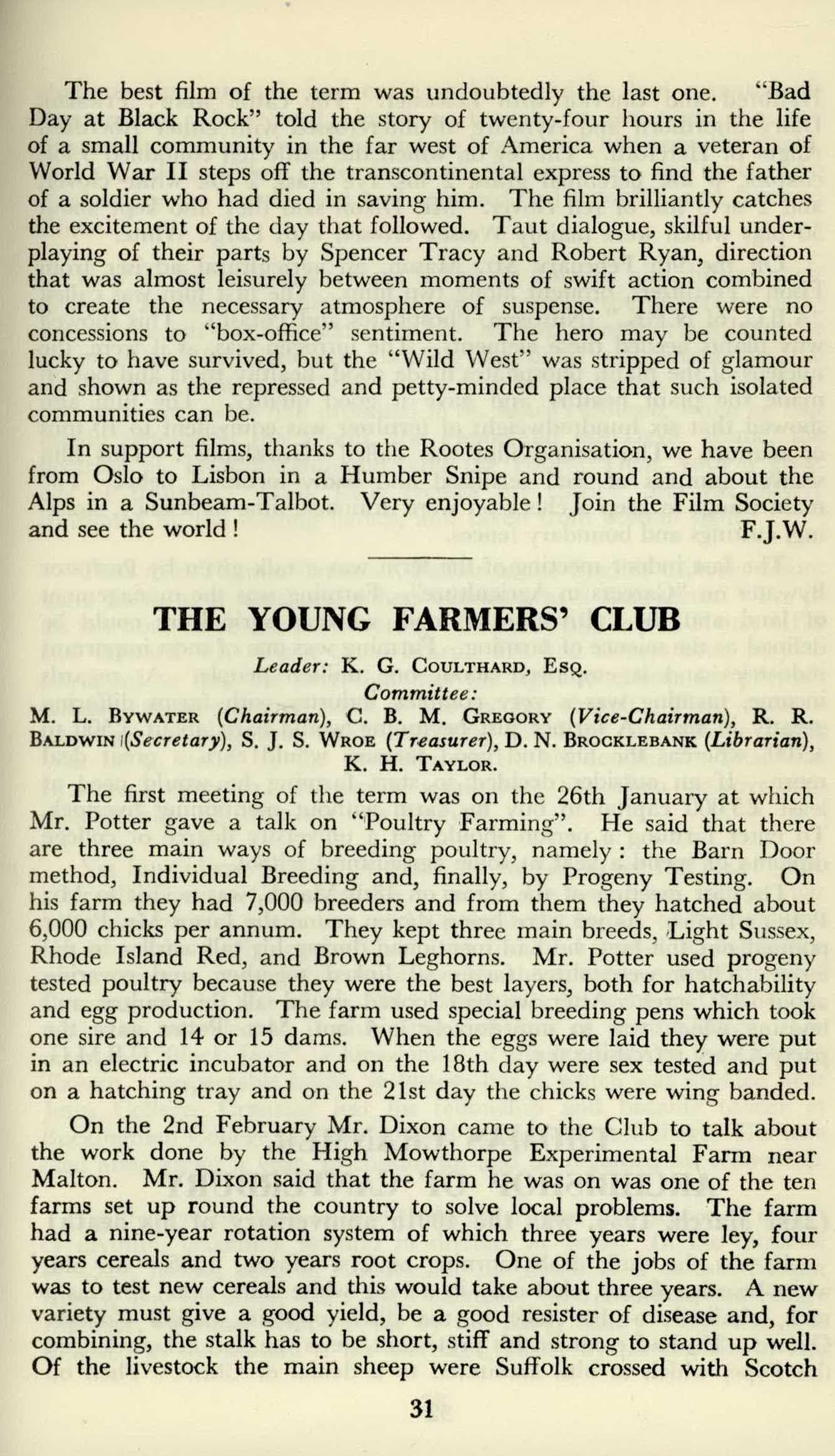
2 minute read
The Young Farmers' Club
from May 1956
by StPetersYork
The best film of the term was undoubtedly the last one. "Bad Day at Black Rock" told the story of twenty-four hours in the life of a small community in the far west of America when a veteran of World War II steps off the transcontinental express to find the father of a soldier who had died in saving him. The film brilliantly catches the excitement of the day that followed. Taut dialogue, skilful underplaying of their parts by Spencer Tracy and Robert Ryan, direction that was almost leisurely between moments of swift action combined to create the necessary atmosphere of suspense. There were no concessions to "box-office" sentiment. The hero may be counted lucky to have survived, but the "Wild West" was stripped of glamour and shown as the repressed and petty-minded place that such isolated communities can be.
In support films, thanks to the Rootes Organisation, we have been from Oslo to Lisbon in a Humber Snipe and round and about the Alps in a Sunbeam-Talbot. Very enjoyable ! Join the Film Society and see the world ! F.J.W.
Leader: K. G. COULTHARD, ESQ. Committee:
M. L. BYWATER (Chairman), C. B. M. GREGORY (Vice-Chairman), R. R. BALDWIN ((Secretary'), S. J. S. WROE (Treasurer), D. N. BROCKLEBANK (Librarian),
K. H. TAYLOR.
The first meeting of the term was on the 26th January at which Mr. Potter gave a talk on "Poultry Farming". He said that there are three main ways of breeding poultry, namely : the Barn Door method, Individual Breeding and, finally, by Progeny Testing. On his farm they had 7,000 breeders and from them they hatched about 6,000 chicks per annum. They kept three main breeds, Light Sussex, Rhode Island Red, and Brown Leghorns. Mr. Potter used progeny tested poultry because they were the best layers, both for hatchability and egg production. The farm used special breeding pens which took one sire and 14 or 15 dams. When the eggs were laid they were put in an electric incubator and on the 18th day were sex tested and put on a hatching tray and on the 21st day the chicks were wing banded.
On the 2nd February Mr. Dixon came to the Club to talk about the work done by the High Mowthorpe Experimental Farm near Malton. Mr. Dixon said that the farm he was on was one of the ten farms set up round the country to solve local problems. The farm had a nine-year rotation system of which three years were ley, four years cereals and two years root crops. One of the jobs of the farm was to test new cereals and this would take about three years. A new variety must give a good yield, be a good resister of disease and, for combining, the stalk has to be short, stiff and strong to stand up well. Of the livestock the main sheep were Suffolk crossed with Scotch










